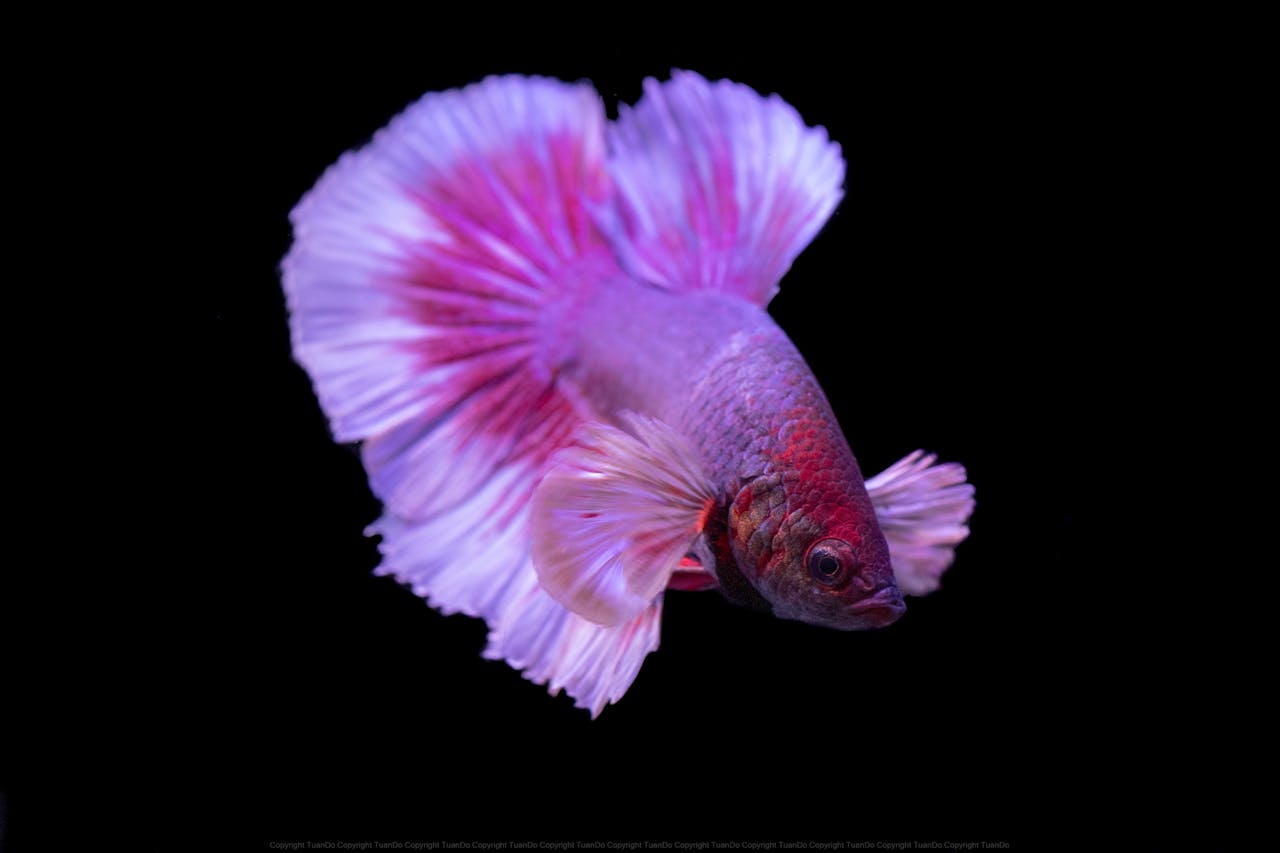Betta fighting fish, known scientifically as Betta splendens, have captivated aquarists and enthusiasts alike with their vibrant colors and unique personalities. Originating from the shallow waters of Southeast Asia, particularly Thailand, these fish have a rich history intertwined with cultural significance. Traditionally, they were bred for their fighting abilities, a practice that has evolved into a popular hobby for many.
As we delve into the world of Betta fighting fish, we discover not only their striking beauty but also the responsibility that comes with caring for these remarkable creatures. The allure of Betta fish lies not just in their appearance but also in their behavior. Each Betta has its own distinct personality, ranging from aggressive to docile, making them fascinating pets to observe.
Their territorial nature is well-documented, and this trait is what led to their use in fighting competitions. However, as we explore the intricacies of Betta care, it becomes clear that understanding their needs and behaviors is crucial for ensuring their well-being. We must approach the care of these fish with respect and knowledge, recognizing that they are living beings deserving of our attention and care.
Key Takeaways
- Betta fighting fish, also known as Siamese fighting fish, are popular for their vibrant colors and aggressive nature.
- Setting up the perfect betta fighting fish tank involves providing adequate space, filtration, and hiding spots for the fish.
- Feeding betta fighting fish a varied diet of high-quality pellets, live or frozen foods, and occasional treats is essential for their health and well-being.
- Preventing diseases in betta fighting fish requires maintaining clean water, monitoring water parameters, and quarantining new fish before introducing them to the tank.
- Understanding betta fighting fish behavior, such as their territorial nature and flaring displays, is important for providing a suitable environment for them to thrive.
Setting Up the Perfect Betta Fighting Fish Tank
Creating the ideal environment for our Betta fighting fish is essential for their health and happiness. A well-designed tank not only enhances the aesthetic appeal of our living space but also provides a safe haven for our aquatic companions. The first step in setting up a Betta tank is selecting an appropriate size.
While some may believe that a small bowl suffices, we should aim for at least a five-gallon tank to allow our Betta ample space to swim and explore. A larger tank also helps maintain stable water parameters, which is vital for their overall health. In addition to size, we must consider the tank’s filtration and heating systems.
Bettas thrive in warm water, ideally between 76°F and 82°F, so investing in a reliable heater is crucial. A good filtration system will help keep the water clean and free from harmful toxins, but we should ensure that the current is gentle enough not to stress our Betta. Adding decorations such as plants, caves, and hiding spots can create a stimulating environment that mimics their natural habitat.
Live plants not only enhance the tank’s beauty but also provide hiding places and improve water quality through natural filtration.
Feeding and Nutrition for Betta Fighting Fish

Feeding our Betta fighting fish a balanced diet is vital for their growth and vitality. Bettas are carnivorous by nature, so we should focus on providing high-quality protein sources. Pellets specifically formulated for Betta fish are an excellent staple food, but we can also supplement their diet with frozen or live foods such as bloodworms, brine shrimp, and daphnia.
These protein-rich options not only entice our Bettas but also promote healthy growth and vibrant colors. It’s important to establish a feeding routine that ensures our Bettas receive the right amount of food without overfeeding. We should aim to feed them small portions two to three times a day, allowing them to consume what they can in about two minutes.
Overfeeding can lead to obesity and water quality issues, so we must be mindful of portion sizes. Additionally, incorporating a variety of foods into their diet can prevent nutritional deficiencies and keep our Bettas engaged during feeding time.
Betta Fighting Fish Health and Disease Prevention
| Health and Disease Prevention | Metrics |
|---|---|
| Water Temperature | Optimal range: 78-80°F |
| Water pH Level | Ideal range: 6.5-7.5 |
| Water Quality | Regular water changes: 25% weekly |
| Diet | Varied diet including pellets, flakes, and live/frozen foods |
| Stress Reduction | Provide hiding spots and avoid overcrowding |
| Common Diseases | Fin rot, ich, velvet, and dropsy |
Maintaining the health of our Betta fighting fish requires vigilance and proactive measures. Regular water changes are essential to prevent the buildup of harmful substances in the tank. We should aim to change 25% to 50% of the water weekly, depending on the tank’s size and bioload.
Testing the water parameters regularly for ammonia, nitrite, nitrate, pH, and temperature will help us identify any potential issues before they escalate. In addition to water quality, we must be aware of common diseases that can affect Bettas.
Observing our Bettas closely for any signs of distress or abnormal behavior is crucial. If we notice any changes in appetite, swimming patterns, or physical appearance, we should act quickly to diagnose and treat the issue. Quarantining new fish before introducing them to our main tank can also help prevent the spread of diseases.
Understanding Betta Fighting Fish Behavior
Understanding the behavior of our Betta fighting fish is key to fostering a harmonious environment. Bettas are known for their territorial nature, especially males who may display aggressive behavior towards one another. This aggression is often showcased through flaring—where they spread their fins and gill covers to appear larger and more intimidating.
While this behavior is natural, we must ensure that our Bettas are not housed together unless we are breeding or have a suitable setup that allows for safe interactions. In addition to aggression, Bettas exhibit a range of other behaviors that can indicate their mood or health status. For instance, a Betta that is swimming energetically and exploring its environment is likely content, while one that hides or stays at the bottom may be stressed or unwell.
By observing these behaviors closely, we can better understand our fish’s needs and make necessary adjustments to their environment or care routine.
Breeding Betta Fighting Fish

Selecting Healthy Breeding Pairs
Selecting healthy breeding pairs is crucial; we should look for vibrant colors, strong fins, and good overall health in both male and female Bettas.
Creating a Breeding Tank
Creating a breeding tank with appropriate conditions is essential for encouraging successful spawning. The tank should be at least 10 gallons with plenty of hiding spots and plants to provide security for the female during the breeding process. We must also maintain warm water temperatures and ensure optimal water quality to promote healthy egg development.
The Breeding Process and Post-Spawning Care
Once the female is ready to spawn, she will display vertical stripes on her body—a sign that she is receptive to mating. After spawning occurs, it’s important to separate the male from the female once he has fertilized the eggs. The male will take on the responsibility of guarding the nest and caring for the eggs until they hatch. We should monitor the tank closely during this time to ensure that both parents are healthy and that any potential issues are addressed promptly.
Tips for Betta Fighting Fish Care
Caring for Betta fighting fish requires dedication and attention to detail.
Regular testing of pH levels, ammonia, nitrite, and nitrate levels will help us keep track of our tank’s health.
Additionally, investing in a quality water conditioner can help remove harmful chemicals from tap water before it enters our tanks. Another key aspect of Betta care is providing mental stimulation through enrichment activities. We can introduce toys or floating objects into the tank for our Bettas to interact with or create a varied environment with different plants and decorations.
This not only keeps them engaged but also promotes healthy behaviors by encouraging exploration and exercise. Lastly, we should always be prepared for emergencies by having a basic first-aid kit on hand specifically designed for aquarium fish. This kit may include medications for common ailments as well as tools for performing water tests or administering treatments when necessary.
The Importance of Responsible Betta Fighting Fish Care
In conclusion, caring for Betta fighting fish is a rewarding experience that comes with significant responsibilities. As we have explored throughout this article, understanding their needs—from tank setup to feeding practices—is essential for ensuring their health and happiness. By committing ourselves to responsible care practices, we not only enhance the lives of our Bettas but also enrich our own experiences as aquarists.
As we continue our journey with these beautiful creatures, let us remember that they are more than just pets; they are living beings deserving of respect and compassion. By fostering an environment that prioritizes their well-being, we contribute positively to their lives while enjoying the unique bond that forms between us and our aquatic companions. Ultimately, responsible Betta care reflects our dedication as caretakers and our appreciation for the beauty of nature within our homes.
If you are interested in learning more about betta fighting fish, you may want to check out this article on how to properly care for betta fish. This article provides valuable information on the proper diet, tank setup, and water conditions needed to keep your betta fish healthy and happy. By following these tips, you can ensure that your betta fish thrives in its environment and lives a long, fulfilling life.


